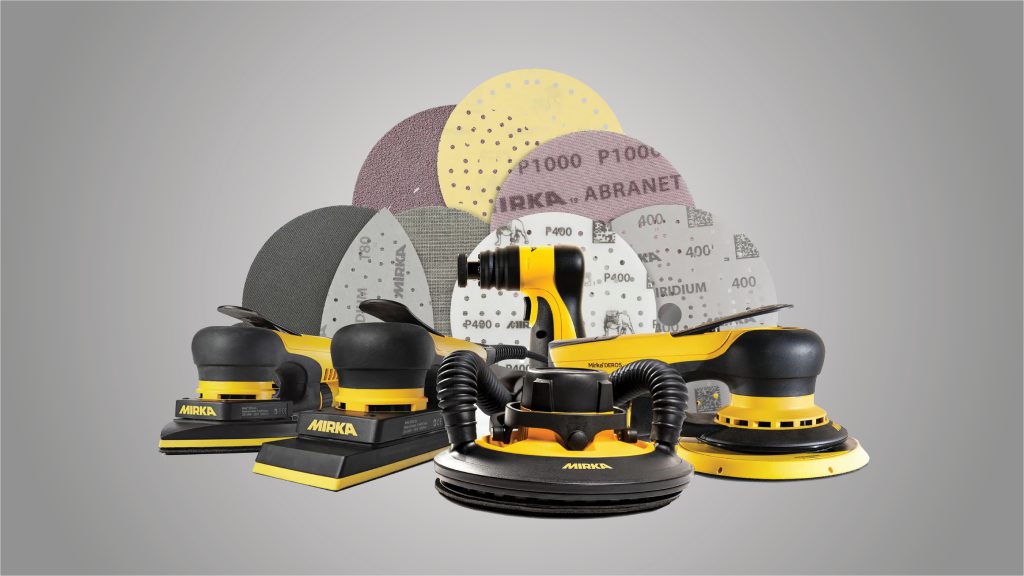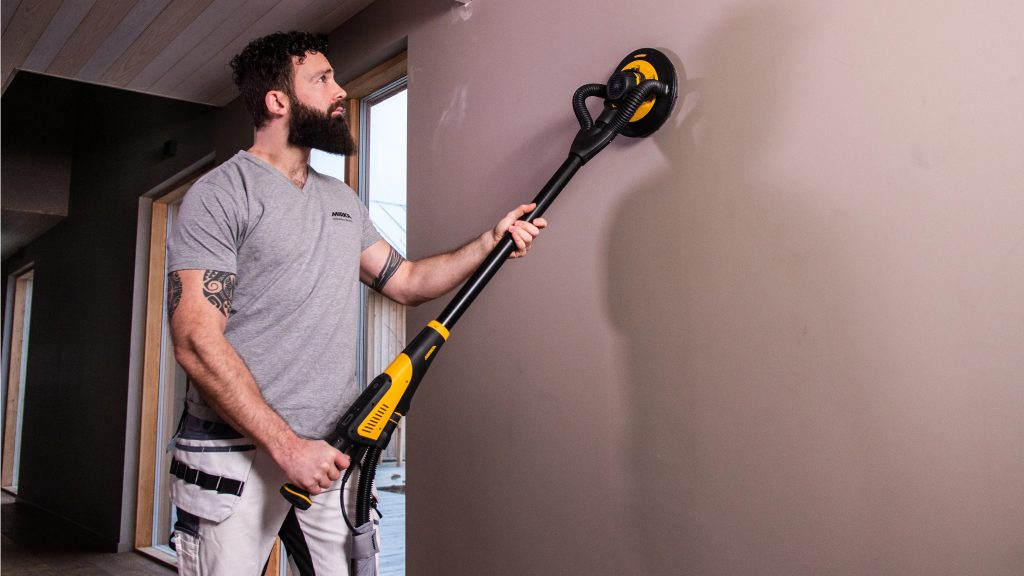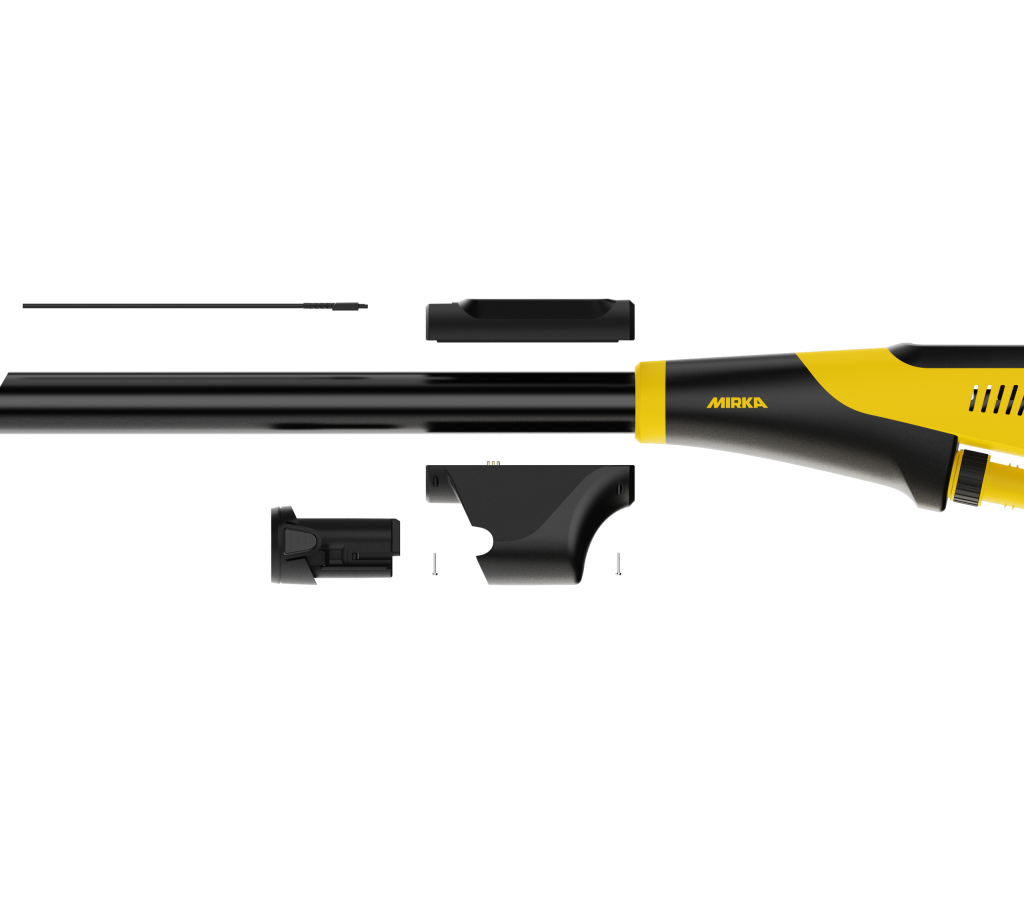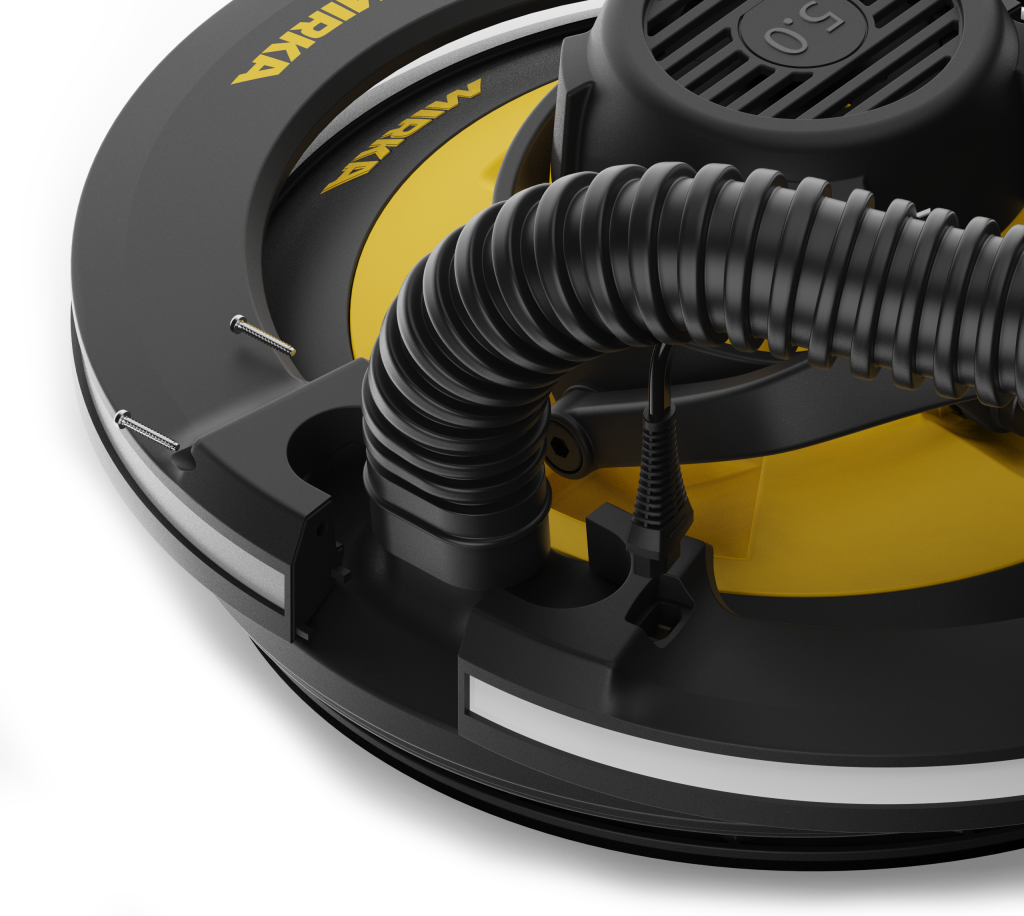

Industrial design
Mid Sweden University
This project and paper outline the development of a lighting concept for the Mirka Leros wall sander.
The project is in collaboration with Mirka Ltd

Intro
In today’s professional environment, the demand for sufficient lighting solutions in the workplace is increasingly significant, especially in trades such as painting, carpentry, and plumbing, where on-site work is common. Mirka, a prominent player in the finishing and sanding industry, is well-regarded for its high-quality and ergonomic power tools, including the popular Mirka Leros wall sander. However, despite its 180-degree flexible head, lightweight construction, and ergonomic design, the Mirka Leros lacks one thing, built-in lighting, which can lead to adverse effects on workers’ well-being such as eye strain, headaches, and an increased number of human errors. This project aims to develop a lighting solution for the Mirka Leros to enhance visual ergonomics for professional users. Utilizing a design thinking approach, which focuses on iterative processes and user-cantered design, aimed to create a solution that is desirable for end users, feasible for production, and economically viable for the client. The resulting two-part lighting solution comprises a lighting unit and a battery holder, with the battery and user interface positioned close to the user to minimize the impact of added weight, and the lighting unit located on the sanding head to provide optimal lighting.
The solution effectively meets the users’ needs by improving visual ergonomics, although a fully integrated lighting solution would be ideal for long-term implementation.
Mirka
The Finnish manufacturer Mirka Ltd, established in Helsinki in 1943, is today one of the world’s leading producers and innovators in finishing technology. Their product range includes abrasive discs, power tools, and even sanding robots. With a dedicated emphasis on creating top-tier,
cutting-edge industrial and ergonomic products, the company has expanded its presence to encompass 18 subsidiaries across Europe, the Middle East, North and South America, and Asia, facilitating an extensive global outreach with exports to over 100 countries. With Mirka’s growing power tool department bringing advanced and ergonomic sanding and polishing solutions to the ever more competitive power tool market.
Leros
One of the power tools produced by Mirka is the Leros sander, a light-weight sander for walls and ceilings, commonly used to prepare surfaces for painting or wallpapering. Leros is one of the lightest wall sanders on the market weighing 3,5 kg with a random oscillating sanding motion, using a variable speed brushless electric motor powered by a wall outlet.
Leros has a significant focus on ergonomics with multiple griping surfaces making it easier for the user to handle the sander. The sanding disk also has a 180 degrees flexible head to to follow the movements of the user. Connecting to an external vacuum via a hose connector port located at the back allows for automatic dust collection.
Limitations facing Leros
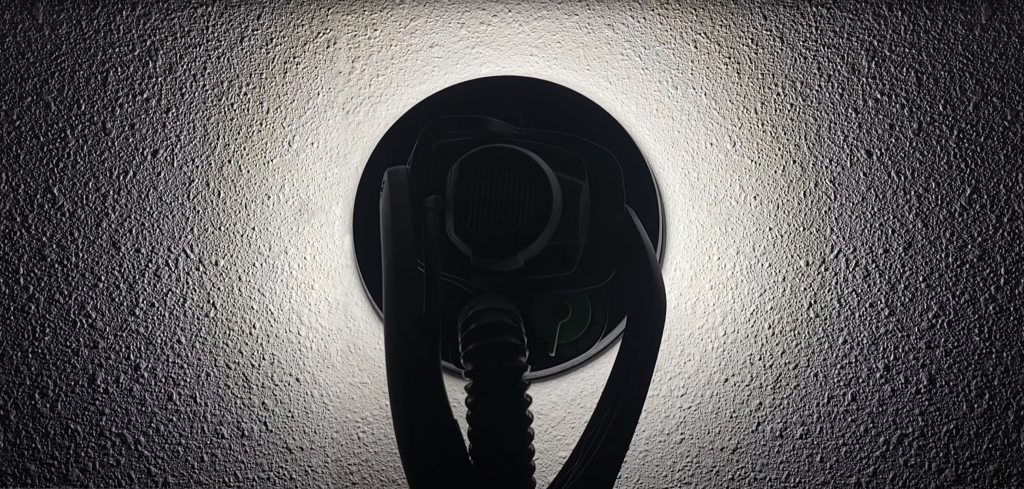
User reviews of Leros have been largely positive, praising the product’s low weight, ergonomic grip and flexible head, making it a popular choice for professionals.
However, the sander lacks one feature, lighting. A feature sought after by users and a feature that is found in one of Mirkas main competitors on the market, the Festool PLANEX 2 which has and built in ring light surrounding the sanding disk, However, the Festool significantly outweighs the Leros,
tipping the scales at 5 kilograms, and is noticeably bulkier in comparison.
So why do users have a need for lighting when wall sanding. Apart from the normal reason a user would want a well-lit work environment such as improved visual ergonomics and a higher quality of life in the workplace. Lighting placed at the head of a wall sander also has one important function; the lighting armature when placed low to sanding surface creates parrel lighting to the surface, which makes it far easier to spot unevenness and scratches when working, reducing the need to go over the work with a light after sanding.
The demand for lighting on the Mirka Leros wall sander is so significant that users have resorted to creating their own lighting modifications for the sander, often implementing homemade solutions. Users do this because they prefer the ergonomics and low weight off the Mirka yet find themselves in need of a convenient method to illuminate their work area, an option currently unavailable with the Mirka.
Mirka design language
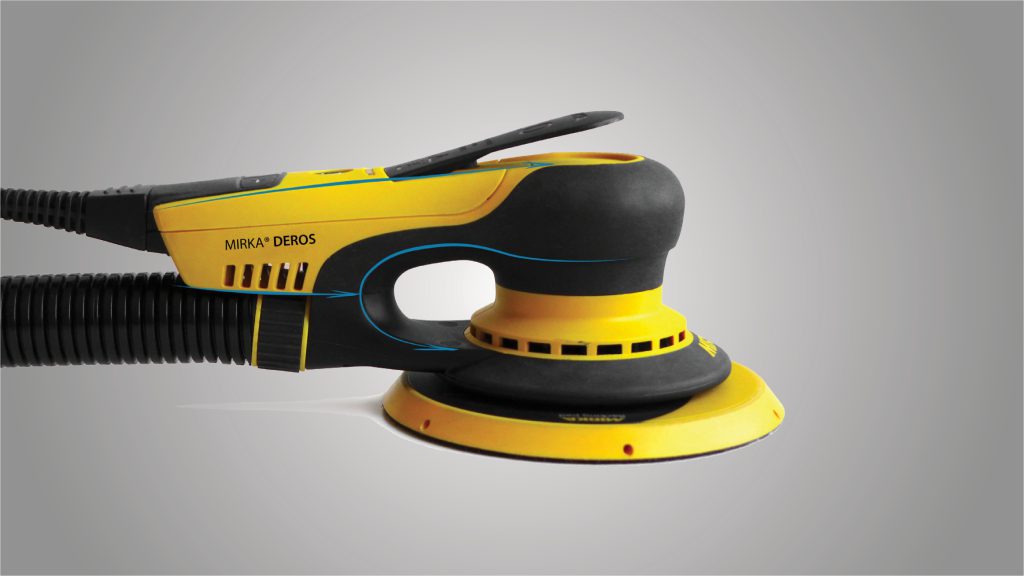
Mirka’s design language is characterized by clear geometric base shapes that incorporate articulated edges and sculpted transitions, resulting in a cohesive aesthetic while preserving the underlying
geometry. The overall shapes of the body, handles, and triggers are carefully crafted based on
considerations of ease of use and ergonomics.
Final design

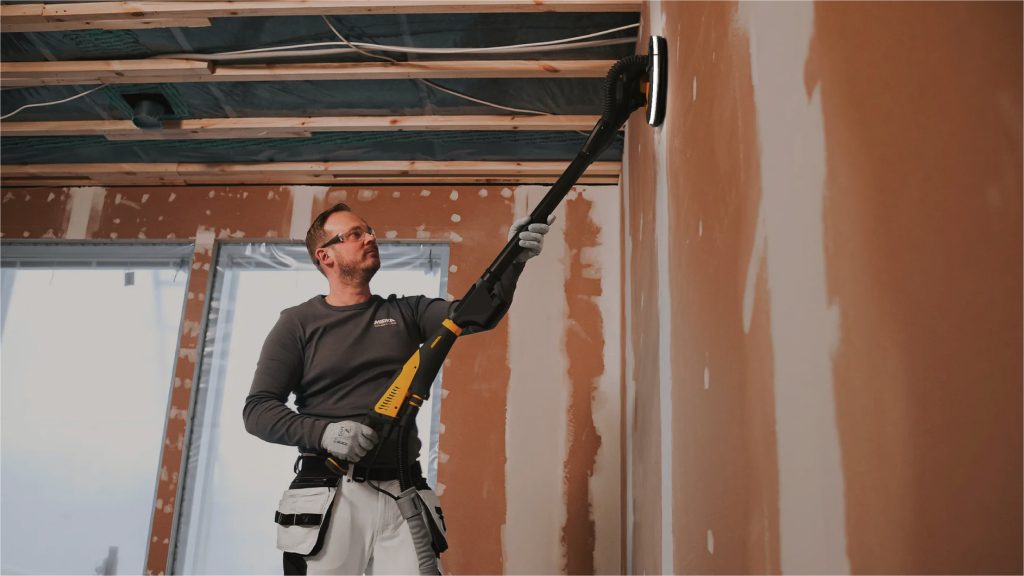
Battery holder
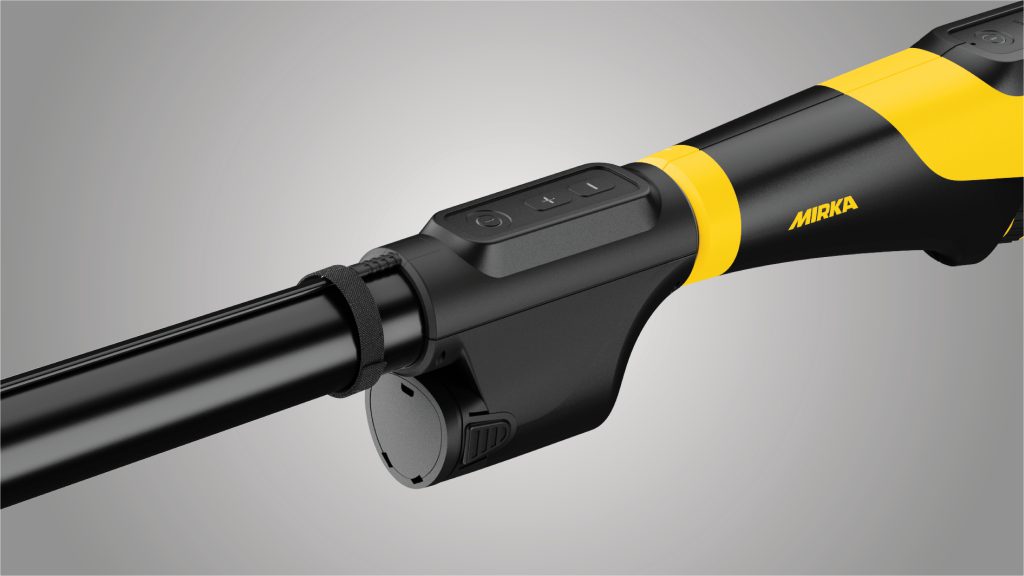
The battery unit is strategically placed in an area where it won’t obstruct the user when using the pipe as a
handle during sanding. Smooth transitions between the over-molded gripping surfaces and the hard plastic body to match Mirkas design language, with an embossed area to clearly indicate where the two halves separate.
The design includes a plug connection that links the battery holder to the light module via a cable. This cable runs along the top of the pipe to minimize discomfort and interference when using the pipe as a grip.
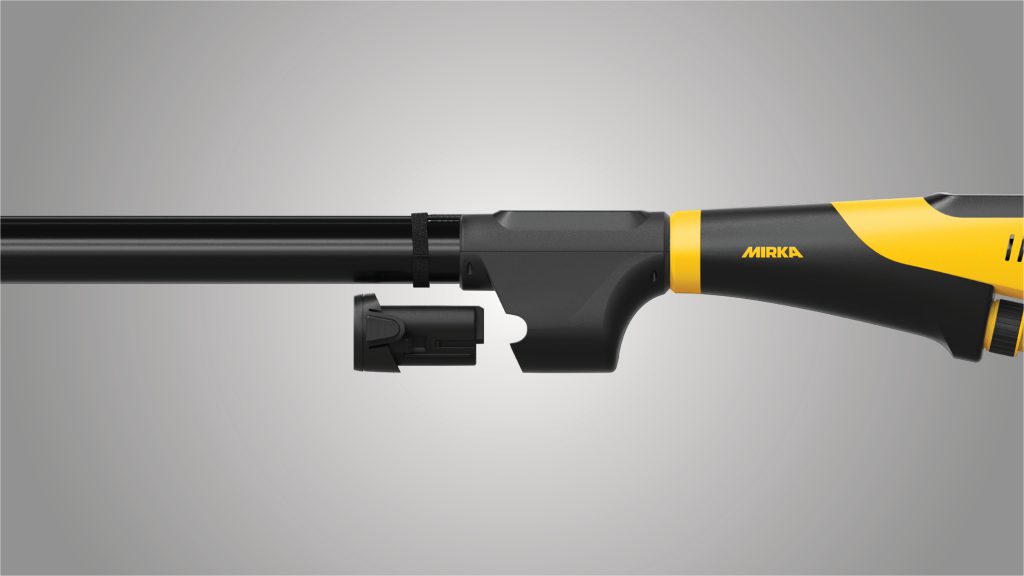
The final design maintains the flow and lines of the main Mirka body, smoothly transitioning to match the shape of the battery. The gripping area is extended from the main body under the battery to enhance usability. A small taper is incorporated to follow the existing curves, ensuring a seamless and ergonomic design. This
extended gripping area not only provides a cohesive look but also improves overall usability, making
the extension feel like a natural continuation of the sander.
The placement of the battery beneath the module facilitates easy switching, as it can be smoothly pulled out horizontally from the battery compartment. This design ensures that replacing the battery is a quick and straightforward process, enhancing overall convenience and efficiency.
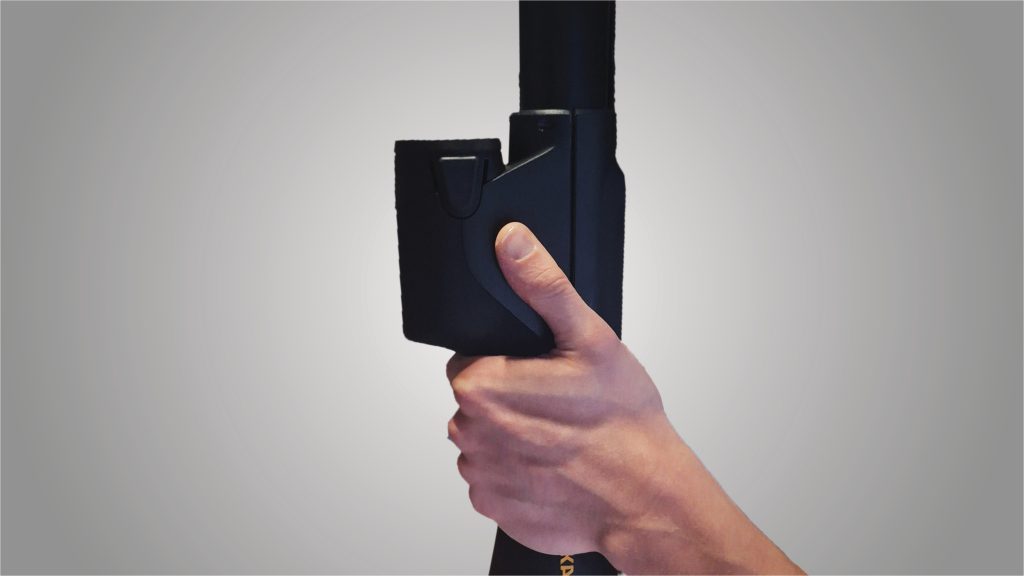
Extending the gripping area from the main body under the battery significantly enhances usability by
providing a more secure and comfortable hold. Additionally, the carefully designed shape of the grip serves a dual purpose by functioning as a stop when the sander is used in a vertical position. This design consideration not only improves the overall handling of the tool but also ensures stability and control during vertical sanding operations.
Lamp
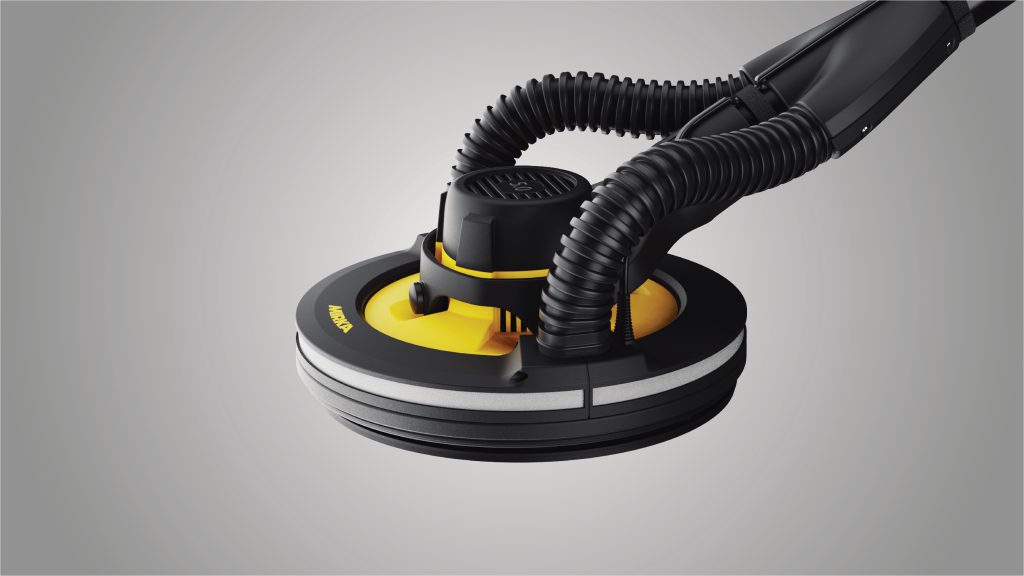
The mounting points have an increased height and width to accommodate screws and the power connector, this allows the rest of the light to have as low of a profile as possible, enabling the sander to swivel as much as possible.
To maintain optimal sanding reach, the light is flush with the sander, ensuring it doesn’t extend beyond the reach of the oscillating sanding disk.
Additionally, a plug for the connection cable has been integrated, allowing a connection between the light module and the battery holder.
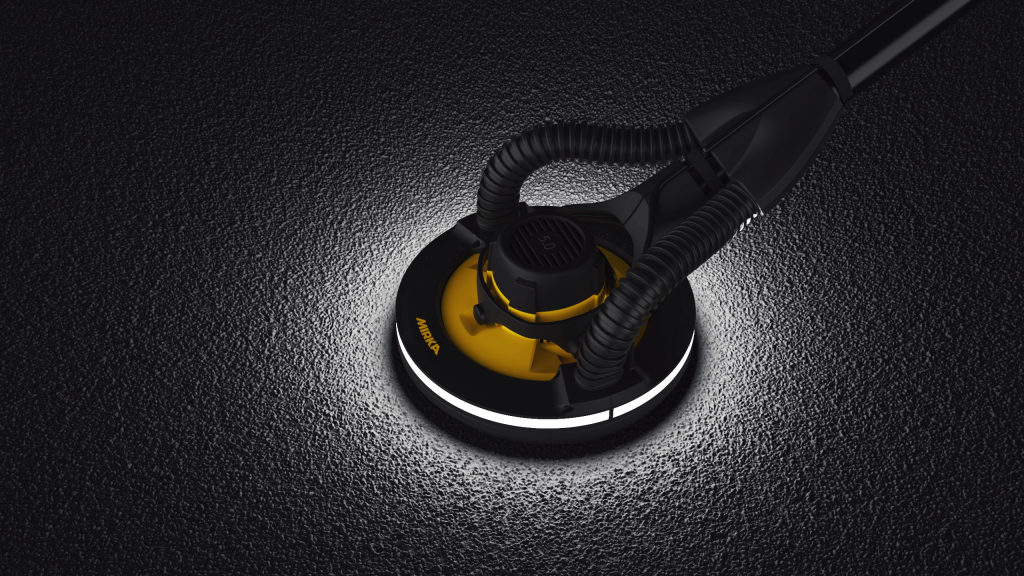
The lights placement low on the sander creates parallel light rays to the sanding surface. This results in any
uneven spots being illuminated on one side while casting a shadow on the other, thereby creating a high
contrast. This high-contrast lighting makes it easy to spot unevenness in the surface, effectively reducing error rates and ensuring a smoother sanding process.

The light is designed to extend 360 degrees around the sander, ensuring illumination regardless of the sanding direction, allowing confidence and accuracy from any angle.

Since the light module is placed directly above the sander, it interferes with the 180-degree swivelling, blocking it at its minimum and maximum. This reduction amounts to 20 degrees or 10 at either end.
However, this limitation is not as significant as expected, as users typically utilize only the middle portion of the full 180-degree reach. It is rare for users to position the sander parallel to the wall, minimizing the impact of the light on the handling of the sander
Assembly
The top and bottom sections of the battery unit are designed to wrap securely around the pipe, with screws used to fasten them together firmly. This construction method ensures a secure and reliable attachment of the battery unit to the sander.
Additionally, a connector is integrated into the design to supply power when the two halves of the battery unit are connected, enabling seamless operation of the sander.
The two halves of the light are placed around the sander and mounted near the connection point of the dust extraction hose. They are secured in place with screws to hold the battery holder firmly when mounted on the sander, effectively preventing any lateral or horizontal movement. Space is provided for the dust hose to fit, with TPE material in the hose improving the friction between the sander and light. A connector supplies power when the two halves are connected.
The logo is replicated on the light to maintain consistency, ensuring that a logo is still prominently displayed at the front of the sander, in line with Mirka’s logo standards.

